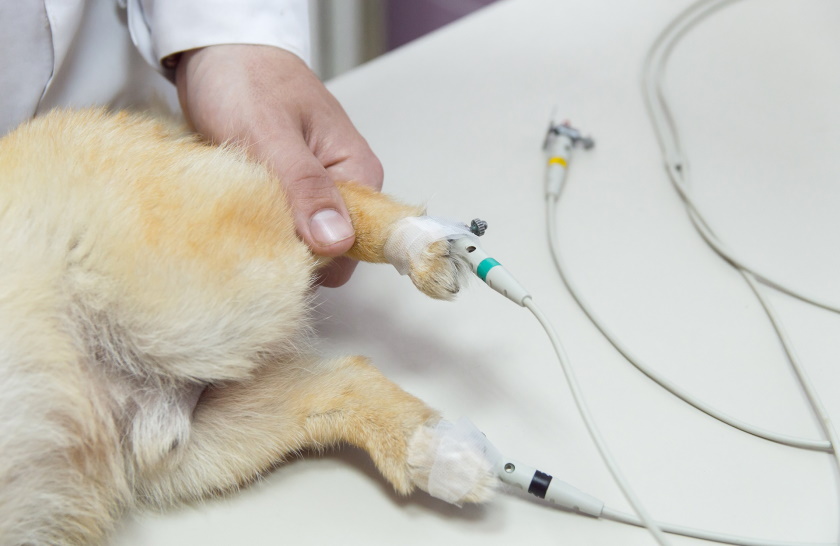ECG

Several research methods are used to fully assess the work of the cardiovascular system. Let's talk about the electrocardiogram (ECG). ECG is a method of graphic recording of electrical phenomena that occur in the heart muscle during its operation. This means that the technique allows you to assess in which direction and with what frequency the impulses in the heart that activate the heart muscle to contract are propagated.
ECG is an integral and most accessible way of diagnosing rhythm disorders. If during the examination the doctor found an irregularity of the heart rhythm, a pulse disorder is an indication for conducting an electrocardiographic examination. In humans, the ECG is important for the diagnosis of not only rhythm disorders, but also the assessment of blood circulation disorders and the diagnosis of coronary heart disease. IBS does not occur in pets, dogs and cats.
The study does not require sedation (anesthesia). The only thing that is necessary is a calm lateral position. The electrodes are attached to the skin of the paws with the help of special gentle fasteners. In some cases, an assessment of the chest leads may be necessary and the doctor may attach additional electrodes to the chest. To make the animal feel safe, take your favorite blanket with you to the clinic if you are planning to examine a cat or a small dog. Large dogs are easier to calm down with special treats.


